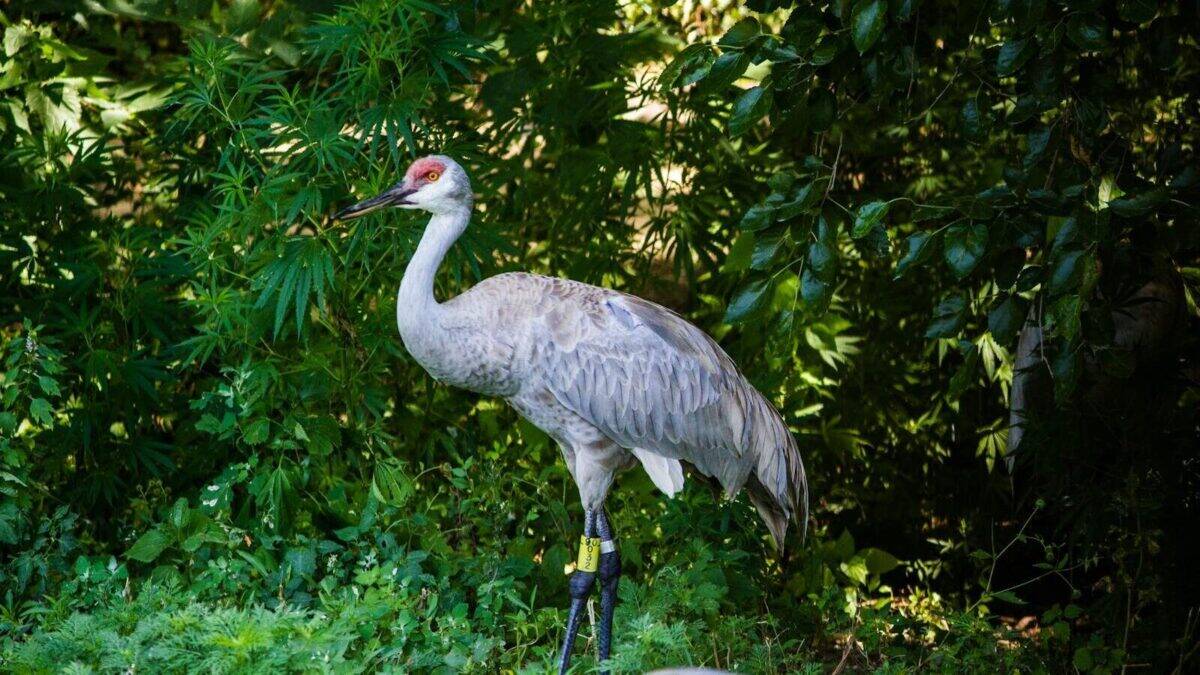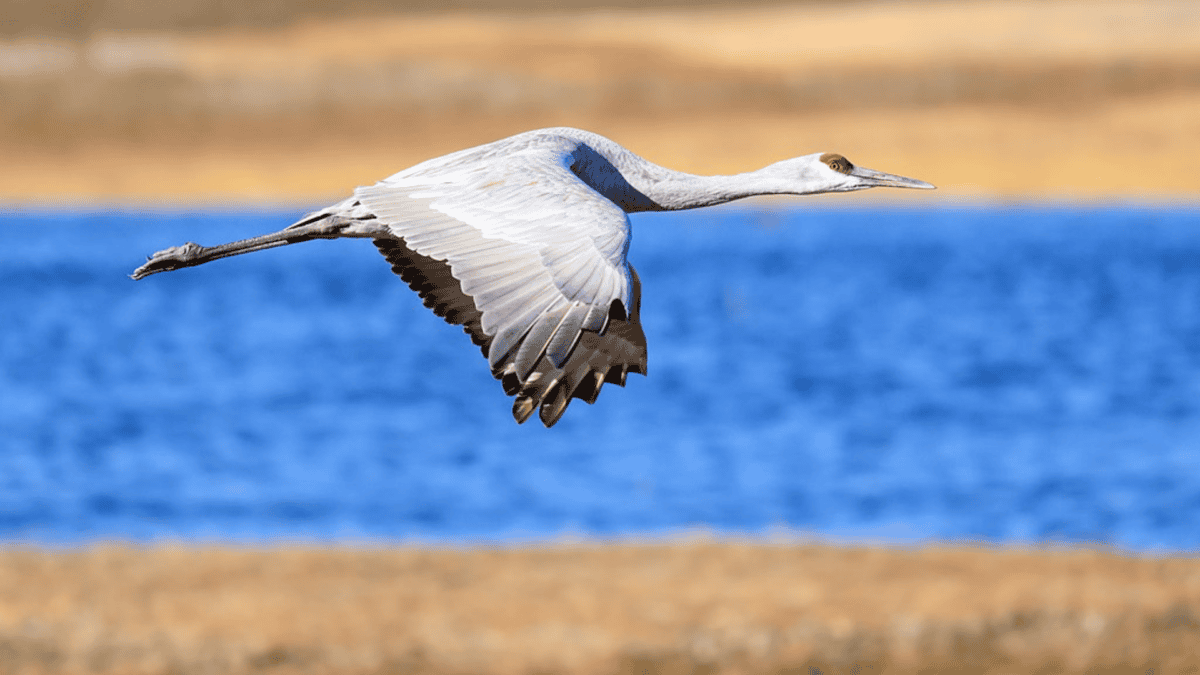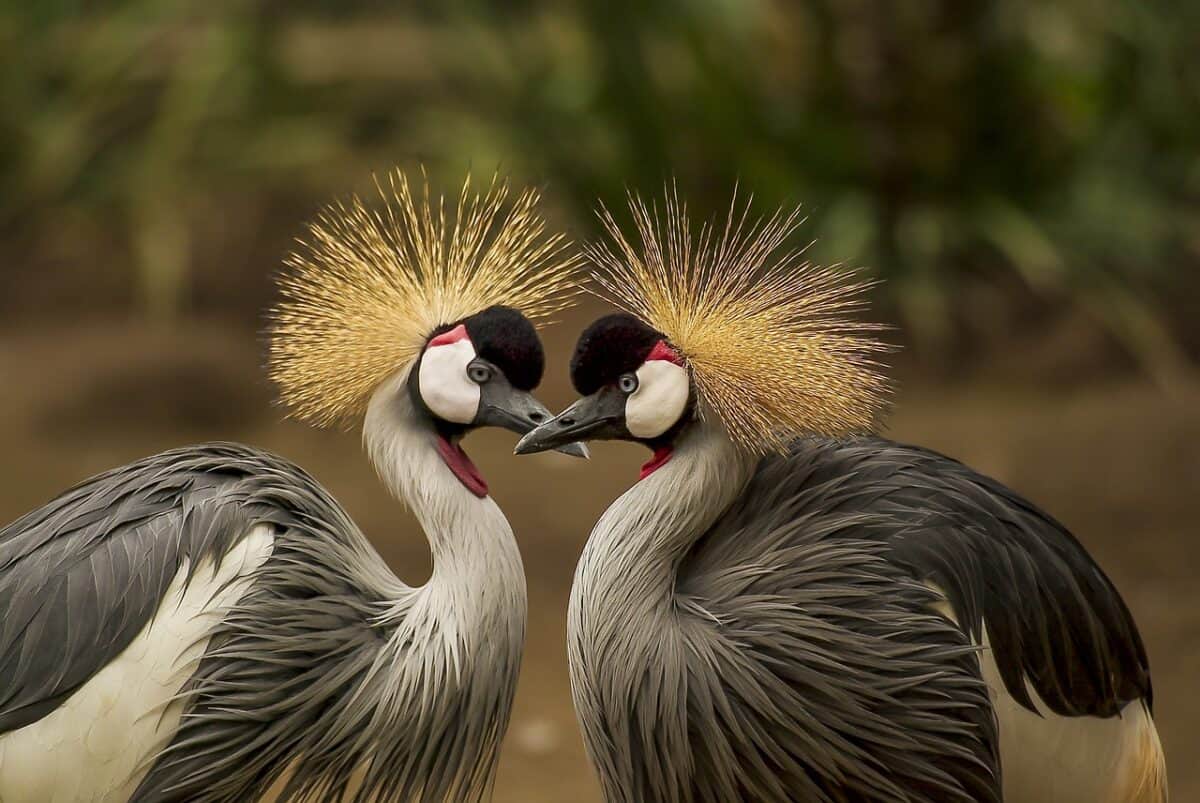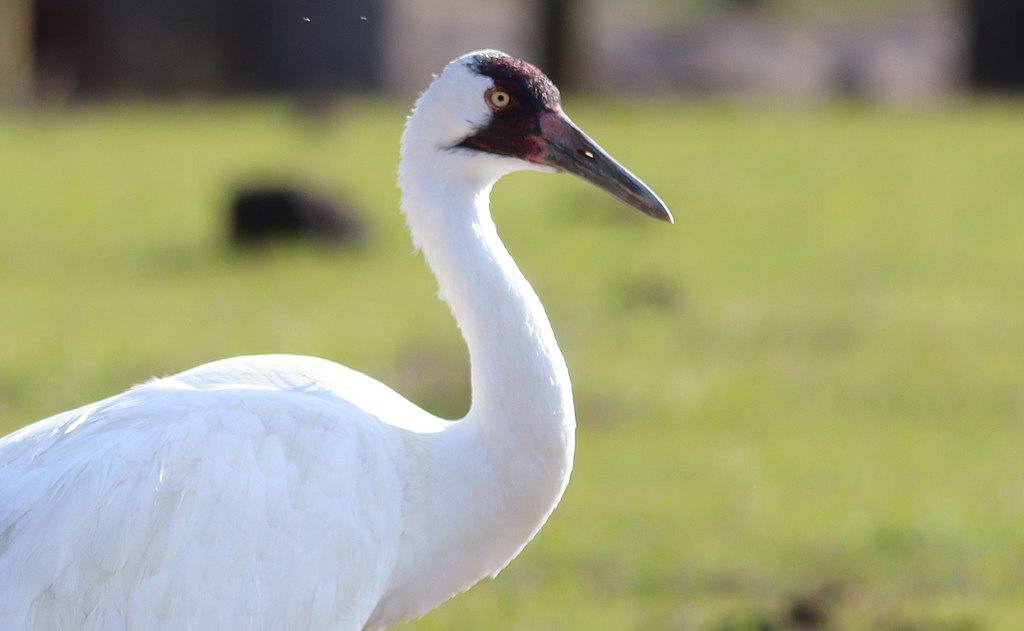Throughout the rich tapestry of Asian cultural history, few symbols have maintained such consistent reverence and symbolic power as the crane. These elegant birds, with their striking appearance and graceful movements, have transcended their biological existence to become profound emblems of longevity, wisdom, and immortality. From the misty mountains of ancient China to the serene gardens of Japan and the spiritual landscapes of Korea, the crane’s image has been woven into mythology, art, literature, and daily life. This enduring association between cranes and immortality reveals not just the aesthetic appreciation of these magnificent birds, but also reflects deep philosophical understandings about life, death, and spiritual transcendence that have shaped Asian worldviews for millennia. As we explore this fascinating subject, we’ll discover how a simple bird came to represent humanity’s most profound aspiration—the quest for eternal life.
Origins of the Crane Symbol in Ancient China

The veneration of cranes as symbols of immortality can be traced back to ancient China, particularly during the Han Dynasty (206 BCE-220 CE), though references appear in even earlier texts. Daoist philosophies prominently featured the crane in their cosmology, with the bird often depicted as the mount of immortals or as transformed immortals themselves. The Chinese term for crane, “he” (鹤), became synonymous with longevity in classical literature. Early texts like the “Classic of Mountains and Seas” (Shan Hai Jing) described magical cranes that could live for thousands of years and transport Daoist immortals between earthly and celestial realms. This association was reinforced by the crane’s observed longevity in nature—red-crowned cranes can live up to 70 years, an impressive lifespan that ancient observers likely exaggerated into mythical proportions. As Daoism developed its complex alchemical traditions aimed at achieving physical immortality, the crane became an essential motif representing the successful transcendence of mortal limitations.
Biological Characteristics That Inspired Immortality Symbolism

The physical characteristics and natural behaviors of cranes provided compelling reasons for their association with immortality. Standing up to five feet tall with wingspans exceeding seven feet, species like the red-crowned crane (Grus japonensis) and white-naped crane (Grus vipio) possess a majestic presence that naturally evokes reverence. Their predominantly white plumage, contrasted with black markings and distinctive red crown patches, visually aligned with traditional Chinese cosmology associating white with purity, death, and the afterlife. Cranes’ extraordinarily graceful movements, especially during mating dances, suggested a connection to celestial realms. Their distinctive trumpeting calls, audible from great distances, were interpreted as communications with heaven. Additionally, the birds’ migratory patterns—disappearing and reappearing seasonally—reinforced perceptions of magical abilities to traverse between worlds. Perhaps most significantly, cranes form monogamous pairs that can last for decades, a visible manifestation of enduring life that ancient observers interpreted as evidence of the birds’ proximity to immortality. These natural attributes created a perfect biological canvas onto which human aspirations for eternal life could be projected.
Cranes in Daoist Immortality Traditions

Within Daoism, the crane occupies a position of supreme importance in immortality symbolism. The concept of the “Crane Transformation” (化鹤) represents one of the highest achievements in Daoist spiritual practice—where an accomplished immortal could transform into a crane to ascend to heaven. Numerous Daoist texts describe the “Dance of the Immortal Crane,” a series of movements and breathing exercises designed to emulate the bird’s grace and supposedly contribute to longevity practices. In Daoist iconography, the Eight Immortals, particularly the figure of Zhongli Quan, are frequently depicted riding white cranes across celestial landscapes. Daoist temples throughout China featured crane motifs in their architecture and ritual implements. The crane’s association with immortality extended to funerary practices, where crane imagery on tombs symbolized the deceased’s spiritual ascension. Even the Daoist priestly robes featured crane embroidery, particularly for high-ranking Celestial Masters, physically connecting the religious practitioner with the immortality symbol they aspired to embody. These traditions reflect the crane’s status not merely as a symbol but as an active spiritual vehicle connecting the mortal and immortal realms.
The Thousand-Year Crane Mythology

One of the most persistent legends across East Asia is the belief that cranes can live for extraordinary lengths of time—specifically one thousand years in many traditions. This belief appears in Chinese texts as early as the Han dynasty and spread throughout neighboring cultures. According to various folkloric accounts, a crane’s plumage progressively changes color throughout its millennium-long lifespan: black in its first 500 years, transforming to white in the latter 500 years. Some traditions elaborate further, claiming that after 600 years, cranes no longer need to eat earthly food, subsisting instead on celestial dew or pure energy. After 1,000 years, they supposedly attain complete immortality, becoming spiritual beings capable of carrying immortals to celestial realms. While scientifically unfounded, these beliefs powerfully shaped cultural perceptions. The crane came to represent not just longevity but the gradual transcendence from physical to spiritual existence—a perfect metaphor for the spiritual journey. This thousand-year mythology became particularly significant in folk Daoism and Buddhism, where it represented the patient cultivation of virtue and spiritual practice required for enlightenment or immortality.
Cranes in Japanese Immortality Concepts

As crane symbolism migrated to Japan, it developed distinctive characteristics while maintaining its core association with immortality. The Japanese term “tsuru” (鶴) became central to longevity concepts, with the famous proverb “tsuru wa sennen, kame wa mannen” (cranes live a thousand years, tortoises ten thousand) encapsulating this belief. In Japanese mythology, cranes were considered yōkai (supernatural beings) rather than mere birds, capable of bestowing blessings of long life. The ancient Japanese tradition of folding paper cranes (origami tsuru) became linked to healing and longevity wishes, culminating in the modern custom of folding one thousand paper cranes (senbazuru) to grant a wish or restore health. This practice gained worldwide attention through the story of Sadako Sasaki, who folded cranes while suffering from radiation-induced leukemia after the Hiroshima bombing. In Japanese visual arts, the crane-turtle combination (tsuru-kame) represents the complete immortality package, appearing in countless paintings, textiles, and decorative objects. Japan’s imperial court particularly revered cranes, with formal court music (gagaku) featuring the “Crane Dance” (Ranryōō) performed at significant ceremonies. These traditions demonstrate how Japanese culture adapted the crane immortality symbol to suit its aesthetic and spiritual sensibilities.
Cranes in Korean Immortality Traditions

Korean culture embraced the crane (hak, 학) as an immortality symbol with unique cultural adaptations. In Korean mythology, cranes were believed to live for 3,000 years rather than the 1,000 years attributed in Chinese and Japanese traditions, reflecting Korea’s emphasis on the symbolism of the number three. Korean Shamanism revered the crane as a psychopomp—a guide for souls traveling between worlds—often depicted carrying departed souls to the afterlife on its back. This belief influenced Korean funeral practices, where crane motifs appeared on burial objects and ceremonial clothes. The Korean folk art tradition of minhwa frequently featured cranes in the “Birds and Animals” genre (화조영모도), where they represented both longevity and social status. Particularly notable is the Joseon Dynasty tradition of featuring cranes on the badges (hyungbae) worn by civil and military officials of the highest ranks, directly connecting the immortality symbol with earthly power. Korean palace architecture incorporated crane motifs in roof decorations, symbolically protecting royal lineages. Even today, modern Korean culture maintains these associations, with cranes appearing in contemporary art, corporate logos, and national symbols as references to Korea’s enduring cultural heritage and aspirations for prosperity.
Artistic Representations of the Immortal Crane

The artistic depiction of cranes as immortality symbols has produced some of Asia’s most exquisite visual art. In traditional Chinese painting, the “Three Friends of Winter” theme pairs cranes with pine trees and bamboo as symbols of resilience and longevity. The “Crane and Pine” (松鹤延年) motif explicitly represents the wish for immortality, becoming a standard decorative pattern across media. Scroll paintings of the Ming and Qing dynasties often depicted immortals riding cranes above misty mountains, visualizing the journey to immortality. In Japanese art, the Rinpa school artists like Ogata Kōrin created striking gold-leaf backgrounds for white cranes, emphasizing their otherworldly nature. Korean celadon pottery of the Goryeo period featured inlaid crane designs (sanggam) that became highly prized for their symbolic value and technical virtuosity. Textile arts across East Asia incorporated crane motifs in imperial robes, wedding garments, and ceremonial hangings, literally wrapping the wearer in symbols of longevity. Metalwork, jade carving, lacquerware, and virtually every decorative art form incorporated crane imagery in specific stylistic conventions that evolved over centuries while maintaining the core immortality symbolism. These artistic traditions not only preserved the cultural significance of the crane but actively contributed to its mystique by rendering the mortal bird as an increasingly supernatural creature.
Cranes in Buddhist Immortality Concepts

While Buddhism technically rejects the concept of immortality in favor of enlightenment and release from the cycle of rebirth, the religion incorporated crane symbolism when it spread throughout East Asia. In Mahayana Buddhist art, cranes often appear in depictions of Pure Lands (especially Amitābha’s Western Paradise), representing spiritual transcendence rather than physical immortality. The crane’s ability to soar high above worldly concerns made it an apt metaphor for the Buddhist concept of rising above attachment. In Chinese and Japanese Buddhist temples, crane motifs frequently adorned ceremonial objects, particularly incense burners, where rising smoke paralleled the crane’s ascent. Zen Buddhism embraced the crane’s patient stillness during hunting as a model for meditation practice. The famous Zen painting subject of “Crane in Winter” represents enlightened consciousness remaining unmoved by adverse conditions. Chan/Zen Buddhist masters sometimes composed death poems comparing their imminent passing to a crane taking flight, demonstrating how the symbol provided a serene framework for accepting mortality while suggesting spiritual continuation. Though Buddhism transformed the meaning of crane symbolism from literal immortality to spiritual liberation, it preserved and expanded the bird’s association with transcending ordinary existence.
Crane Dance Rituals and Immortality Practices

Across Asian cultures, physical emulation of crane movements developed into sophisticated ritual practices believed to promote longevity or even immortality. In China, Daoist longevity exercises called Daoyin included the “Dance of the Celestial Crane” (Tiānhè Wǔ), which mimicked crane movements while incorporating specific breathing patterns thought to circulate vital energy (qi). These practices evolved into certain forms of qigong and tai chi still practiced today, particularly the White Crane style, which emphasizes movements based on crane behavior. Similar traditions developed in Korea, where the court dance Hakchum (학춤, Crane Dance) portrayed the bird’s graceful movements and was performed during ceremonies praying for the king’s longevity. In Japan, the tradition of the court Crane Dance (Ranryōō) dates back to the Heian period (794-1185 CE), performed during imperial ceremonies and believed to attract celestial blessings. Beyond formal dance, ritual crane postures appeared in various spiritual practices, including meditative stances and healing exercises. Medical texts from the Ming Dynasty recommended specific crane-inspired movements for treating various ailments and extending lifespan. These embodied practices transcended mere symbolism, creating kinesthetic experiences that connected practitioners physically to the immortality concepts represented by the crane.
The Crane in Literature and Poetry

Literary traditions across East Asia have immortalized the crane as a poetic emblem of eternal life, creating a rich textual legacy that reinforced its symbolic power. In Chinese poetry, Li Bai, Du Fu, and countless other poets employed crane imagery to discuss immortality aspirations, with the Tang Dynasty producing particularly abundant examples. The expression “riding a crane to become an immortal” (乘鹤成仙) became a common literary euphemism for death, reframing mortality as transformation. Japanese waka and haiku traditions frequently featured cranes (tsuru) as seasonal references (kigo) suggesting longevity, with Matsuo Bashō’s famous haiku about a solitary crane encompassing both natural observation and spiritual significance. Korean sijo poetry used crane imagery to explore both Confucian ideals of the virtuous life and Buddhist concepts of transcendence. Across these traditions, the literary crane functioned as a powerful metaphor bridging the visible and invisible worlds. Particularly moving are the death poems of Chinese and Japanese literary figures who employed crane imagery when facing their own mortality, finding solace in the traditional symbol. Folk tales featuring magical cranes who revealed themselves as transformed immortals circulated widely, appearing in collections like “Strange Stories from a Chinese Studio” and “Tales of Times Now Past,” further cementing the crane’s association with supernatural longevity in popular consciousness.
Modern Continuations of Crane Symbolism

While traditional beliefs in literal crane immortality have faded in contemporary Asia, the symbolic association remains potent and has adapted to modern contexts. In Japan, the tradition of folding one thousand paper cranes (senbazuru) has evolved from a longevity charm into a powerful peace symbol following Sadako Sasaki’s story, with crane installations appearing at Hiroshima and other memorial sites worldwide. Conservation efforts for endangered crane species, particularly the red-crowned crane, often invoke traditional reverence for the birds, creating a fusion of modern environmental ethics with ancient symbolism. Contemporary Asian visual arts continue to reference crane immortality symbolism, though often with postmodern reinterpretations that dialogue with tradition. Corporate logos and national symbols throughout East Asia incorporate crane imagery to suggest longevity and reliability, transferring the immortality association to institutions and brands. In Korean, Japanese, and Chinese popular culture, crane references appear in film, animation, and literature, often as shorthand for traditional values or supernatural elements. Health and wellness practices derived from traditional Chinese medicine continue to incorporate crane-inspired movements and terminology. Even as literal belief in the crane’s supernatural qualities has diminished, the symbolic potency remains deeply embedded in cultural consciousness, demonstrating how ancient symbols can evolve while maintaining their essential associations.
Conclusion: The Enduring Flight of Immortality

The crane’s journey through Asian cultural history reveals much more than simple bird symbolism—it illuminates fundamental human aspirations toward transcending mortality. From ancient Chinese Daoists seeking physical immortality to Japanese artisans crafting paper cranes for healing, the symbol has demonstrated remarkable adaptability while maintaining its core association with eternal life. This continuity across millennia and across diverse cultures underscores the psychological resonance of the crane as immortality symbol, speaking to deep human needs to conceptualize existence beyond death. In contemporary times, as literal belief in physical immortality has waned, the crane has seamlessly evolved to represent ecological preservation, cultural continuity, peace, and spiritual transcendence. Perhaps most significantly, the crane symbolism reminds us that immortality concepts are not solely about defeating death, but about connecting with something timeless—whether through art, ritual, spiritual practice, or natural beauty. As the elegant birds continue their migrations across Asian skies, they carry with them not just their own biological existence but the accumulated weight of human meaning-making that has transformed them into living emblems of our most profound hopes for continuity beyond our finite lives.
- The Only Mammal That Can Breathe Through Its Skin - August 19, 2025
- How to Win Over Judges in Dressage Competitions - August 19, 2025
- Is There Hope for the Critically Endangered Amur Leopard? - August 19, 2025

